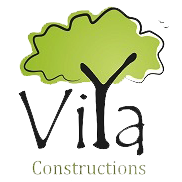Living in a newly built house is a really fulfilling experience. But much before the house becomes a reality, there are a few important Vastu tips that we look for when we start planning for a home.
Vastu tips for design in construction
What do we look for when we build a home?
A house is comfortable to live in if it has:
- User friendly Design – The home has to be simple and easy to maintain. Amenities must be well laid out and should match with the lifestyle of the occupants. Storage facilities, washing areas, rain protection and recreational areas should be present as per the taste of the family.
- Ventilation – Every room has to be well ventilated. Natural light and breeze makes the rooms and passages lively.
- Psychological comfort for the family – Well being of the family is of the utmost importance. Occupants should feel happy to be at home.
- Aesthetic pleasure (inward anubhava) – Every aspect of the house should look attractive and pleasing for the eyes. Be it the interiors, exteriors or the landscape.
- Good layout – The house layout should be in accordance with the seasonal changes so that it is comfortable to stay in throughout the year. Good air circulation in the premises makes every breath enriching.
But how can all these be achieved in a home? Let us see in detail if there are specific Vaastu tips that can guide to build such comfortable homes.
What are the Vastu tips that could answer these questions?
The need for a pleasant home can be achieved by following simple Vastu tips starting from the initial phase of building a home, right from the site selection!
Site selection
A new house or building effects and is affected by the environment. By including designer while choosing the site, many aspects of a comfortable home can be worked out right at the start.
Shape of the plot
Shape of the plot for construction has to be ideally geometric like a square or rectangle. Odd shaped plots are not considered auspicious and hence actual building plot can be defined by means of fence or bricks as boundary. The part outside the actual building plot can be used for garden or play area.
Composition of the earth
A designer can look into the composition of the earth to understand the load bearing capacity of the soil as it decides the foundation to be used. The ability to sustain vegetation is also observed, as any soil incapable for regeneration is not good for human habitation. The observation can span for at least a season to assess the fertility of soil.
Natural gradation
Examining the slope of the soil or natural gradation can help the designer to create a design that works in advantage for that plot. Water points, staircase and sewage disposal are dependent on the slope of the soil. Auspicious slopes like South-West to North-East, North to South and West to East are considered the best. The slope of land is extremely important as entire neighbourhood should have waterways and sewage disposal in coherence.
Water source
Location of water in a site is crucial as tapping a source of water that is uncontaminated and gives water throughout the year is ideal. Water source on North or East is beneficial, but if it is not possible or not available there, any suitable location can be accepted.
Establishing Orientation or Cardinal Directions
Traditions have set specific directions for different activities. So establishing the cardinal directions viz, setting up a proper North-South and East-West axes is an important aspect of design. The next step after plotting the axes is Pada Vinyaasa which is setting out the plot into modules.
Brahmasthana
The Brahmasthana or centre of the plot is marked. The total form of the building in a design grows from the Brahmasthana.
Brahma pada or veethi
The central area of total form including Brahmasthana forms the Brahma Pada. It has high concentration of energy hence used as courtyards or hall for collective gathering.
Deivika padam or veethi
The first concentric space around Brahma Padam is Deivika Padam. Here also the concentration of energy is fairly high and this space is mostly kept as passages and rooms for collective gathering such as dining or family, and not for individual usage.
Manusha padam or veethi
The second concentric space around central point is called Manushya Padam. This space contains energy suitable for human activity and hence kitchen, study area and Pooja are placed here.
Paisacha padam or veethi
Finally, the third concentric space is called Paisacha Padam and is very low with energy. This can be used as storages, walkways, verandahs or even bedrooms or office space.
Setting up a design brief
For building a Vaastu compliant building, it is imperative that the designer incorporates all the factors mentioned above into the design. The designer sets up a design brief that is essentially a small note of house design according to the size, preferences and specific needs of the family. This activity therefore gives the uniqueness, aesthetics and comfort to make it a home for that specific family. The following pointers helps to set up a design brief specific to the needs of a particular family:
Eco-sensitivity
By being aware of the larger ecosystem that includes the neighbourhood, land, terrain and quality of vegetation, the designer can come up with a design that blends in with the environment. This ensures that a harmony is maintained between the building and the neighborhood.
Philosophy of design
By familiarising with the lifestyle and nature of the family, designer can create a design that goes well with the likings of the family. For example, an internal courtyard or an open area would suit the preferences and lifestyle of an introverted family.
Understanding of building materials
The choice of materials in both colour and form must create a harmony in the mind of the user. This means that any material or colour that may create a negative impact on the minds of the inhabitants should be carefully avoided.
Knowledge of aesthetics
The form, colour, space, light and shade must be dealt together to create a pleasant ambience. To create a healing an enriching experience, built space is divided into modules which are always in balance with each other. For example, a piece of furniture or a beam in the room would be a fraction of the height or width of the room.
Comprehension of energy fields
The amenities in the house has to be located to create an energy field that affects the occupant in a positive manner.
Ayadi porutham
Ayadi means wealth in terms of money, health, children, happiness, friendship and spiritual strength. Ayadi poruttam or calculations are made to foster this wealth and prosperity in all aspects of life. Firstly, the birth star (Janma Nakshatram) of owner is checked against the module (padam) being adopted for the design. The perimeter or width of the house is also used as a measure for benefit calculation.
Indeed it is clear that a contemporary designer can integrate the Vaastu concepts to create a building that gives wealth, peace and harmony to the occupants. Being aware of and following these Vastu tips would definitely go a long way in creating a dwelling that is in harmony with the rest of the environment. Adapting age-old building techniques to the framework of contemporary Vaastu can result in a new paradigm of Indian design.




